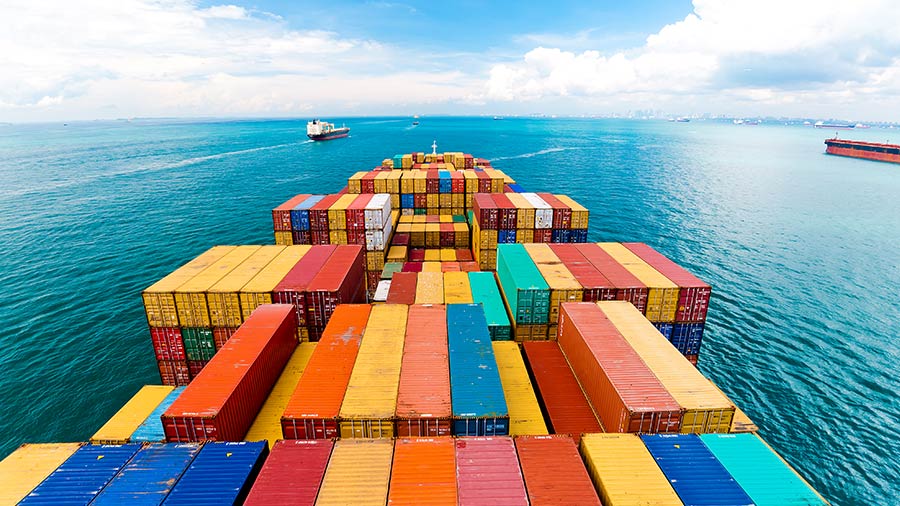China
India Lands Hercules in High Disputed Area
The Indian Air Force has flexed its muscles by landing a C 130J-30 Super Hercules on an airstrip in a disputed border area with China; an achievement the Ministry of Defense called a “significant capability demonstration.” The ministry said the aircraft touched down at 6:54 a.m. Tuesday at Daulat Beg Oldie, the highest airstrip in the world at 5,065 meters above sea level. The airstrip is in the disputed border area of Aksai Chin and was built during the 1962 conflict with China. After winning the 1962 war, China gained control of a large area of land in Jammu and Kashmir, but Indian maps show Aksai Chin as part of the northern Indian state. China also lays claim to land in Arunachal Pradesh, in India’s northeast. Bilateral relations were tested in April when Chinese troops encamped for three weeks in Ladakh, a region in Jammu and Kashmir. Continue reading on India Real Time
The Indian Air Force has flexed its muscles by landing a C 130J-30 Super Hercules on an airstrip in a disputed border area with China; an achievement the Ministry of Defense called a “significant capability demonstration.” The ministry said the aircraft touched down at 6:54 a.m. Tuesday at Daulat Beg Oldie, the highest airstrip in the world at 5,065 meters above sea level. The airstrip is in the disputed border area of Aksai Chin and was built during the 1962 conflict with China. After winning the 1962 war, China gained control of a large area of land in Jammu and Kashmir, but Indian maps show Aksai Chin as part of the northern Indian state. China also lays claim to land in Arunachal Pradesh, in India’s northeast. Bilateral relations were tested in April when Chinese troops encamped for three weeks in Ladakh, a region in Jammu and Kashmir. Continue reading on India Real Time
Go here to see the original:
India Lands Hercules in High Disputed Area
Business
Tesla Sales Slow Down as China’s BYD Gains Ground

Tesla’s sales dipped 1% in 2024, marking its first decline in over a decade, while BYD surged with 1.76 million EV sales, narrowing the competition gap.
Tesla’s Sales Decline
Tesla has faced its first sales decline in over ten years, with 2024 deliveries falling to nearly 1.79 million vehicles, a 1% drop from 2023. Despite aggressive price cuts to attract buyers, the company led by Elon Musk struggled to maintain its position as the top electric vehicle (EV) manufacturer. In contrast, China’s BYD is on track to nearly close the gap, reporting 1.76 million EV sales in 2024.
BYD’s Market Surge
BYD experienced robust growth, achieving a 41% year-on-year increase in total vehicle sales, totaling over 4.2 million. Most of BYD’s sales occur in China, where the company has extended its lead over brands like Volkswagen and Toyota. The rise has been fueled by increasing demand for hybrids and favorable market conditions, including reduced prices and government incentives for EV adoption.
Industry Challenges
Tesla continues to grapple with declining sales and increased competition, particularly in China, where rivals have gained traction. The EV market is softening in regions such as the US and Europe, prompting companies like Ford and Volkswagen to adjust their sales forecasts. Additionally, geopolitical tensions have led to tariffs against Chinese imports, impacting the industry landscape.
China
Latest Adjustments to Import-Export Tariffs in China for 2025

The State Council has announced 2025 import-export tariff adjustments to enhance domestic demand and industrial growth. This includes tariff reductions on medical supplies and green products, increases on certain commodities, and support for technological innovation and sustainable practices.
The State Council has announced new adjustments to the China import-export tariffs for 2025 to expand domestic demand and serve industrial development and technological progress in the coming year.
These adjustments include tariff reduction on certain medical supplies, critical equipment and key parts, and green products, tariff increases on certain commodities based on domestic demands such as syrup and sugar-containing premixes, vinyl chloride, and battery separators, as well as adjustments to tariff items.
China will adjust import and export tariffs on selected goods in 2025 in a bid to expand domestic demand, support high-quality development and opening up, and enhance the synergy between domestic and international markets, the Customs Tariff Commission of the State Council (the ‘Commission’) said on Saturday, December 28, 2024.
Below we take a closer look at the changes introduced in the 2025 Tariff Adjustment Plan.
To promote technological innovation and support the development of new and advanced productive forces, China will reduce import tariffs on key items, including automatic transmissions for special-purpose vehicles, polyolefin polymers, ethylene-vinyl alcohol copolymers, fire trucks, and rescue vehicles.
In alignment with efforts to enhance and improve public well-being, tariff reductions will also be applied to critical medical and healthcare materials such as sodium zirconium cyclosilicate, viral vectors for CAR-T cancer therapy, and nickel-titanium alloy wires for surgical implants.
To foster green and low-carbon development, import tariffs on ethane and certain recycled copper and aluminum materials will be lowered, encouraging sustainable practices and resource efficiency.
| This article was first published by China Briefing , which is produced by Dezan Shira & Associates. The firm assists foreign investors throughout Asia from offices across the world, including in in China, Hong Kong, Vietnam, Singapore, and India . Readers may write to info@dezshira.com for more support. |
Read the rest of the original article.
China
How authoritarian regimes are targeting critics abroad

China’s “white paper” protests marked a significant political moment in 2022. Transnational repression threatens dissidents worldwide. Governments must strengthen protections for human rights against these increasing violations.
The end of November marked the second anniversary of China’s “white paper” protest movement against COVID lockdowns in 2022. Triggered by a fire in Xinjiang that claimed ten lives, demonstrations inside China turned increasingly political. At one point crowds in Shanghai chanted for the president and Communist party general secretary, Xi Jinping, to step down.
Outside China’s borders, members of Chinese diaspora communities held rallies in support of the demonstrators inside China. Many students overseas posted messages of solidarity.
But despite being far from China, these protesters were taking serious risks. Transnational repression — authoritarian states reaching across borders to silence dissent — is on the rise, fuelled by the confluence of digital communications and the worldwide advance of authoritarianism.
Yet democratic governments are failing to monitor such transnational human rights violations on their territory or properly support targets, as international law obliges them to do.
Chinese communities are by no means the only group facing systematic infringements on the exercise of basic rights from abroad. Data from the human rights organisation Freedom House has documented more than 1,000 cases of transnational repression committed by 44 governments against targets in 100 countries around the world since 2013.
A recent report from journalism organisation Reporters Sans Frontieres documented threats and attacks by Iran against exiled Iranian journalists including in the US, France, Germany and Sweden, with London identified as a particular “hotspot”.
The 2023 murder of Sikh activist Hardeep Singh Nijjar in Canada, allegedly at the hands of Indian security services, showed dictatorships aren’t the only perpetrators of cross-border human rights violations.
And that’s just the cases of physical violence and detention. Once we take into account the range of new techniques of coercion and surveillance opened up by digital communications and cross-border mobility, the scale of the problem becomes more apparent.
Widening scope of targets
Today, states can coerce without setting foot on the territory in which the target is located. Among other techniques, they can threaten family members, deploy digital surveillance and censorship, mount cyber-attacks and mobilise ferocious online harassment campaigns. The result is significant constraints on the exercise of human rights by significant numbers of people.
These transnational human rights violations are not limited to diaspora communities or foreign dissidents. Journalists, lawyers and activists have also become targets. UK author Michela Wrong has faced a coordinated campaign of online harassment by proxies of the Rwandan government over criticisms of Paul Kagame’s dictatorship. Pro-democracy Hong Kong media mogul Jimmy Lai’s overseas legal team in London has been targeted by state-sponsored cyber-attacks and intimidation.
Taking a risk: a supporter of jailed Hong Kong media tycvoon, Jimmy Lai, protests in London, November 2024.
Vuk Valcic/ZUMA Press Wire
Our recent article the Journal of Human Rights Practice details this major blind spot in most countries’ human rights protection arrangements and suggests an institutional way forward.
Democratic complicity
Targeted people routinely struggle to obtain help from local authorities.
Yet governments are obliged to protect targets of transnational human rights violations. Article 2 of the International Covenant on Civil and Political Rights (ICCPR) obliges states to ensure civil and political rights “to all individuals within its territory”. It also mandates the adoption of “such laws or other measures as may be necessary to give effect to the rights recognized”. It requires that those whose rights are violated have an effective remedy.
But governments have failed to equip national bodies to meet these 21st-century threats to human rights.
Some governments have sought to raise awareness among police forces. But many of these human rights violations, particularly subtle forms like harassment of family members abroad, do not constitute crimes under current law.
Domestic intelligence agencies have taken an interest in the national security dimensions of transnational repression. But security agencies are ill-equipped to provide the public-facing support and assistance needed by those targeted, or to comprehensively monitor the problem.
So far, the issue has not been on the radar of specialised human rights institutions such as the UK’s Equalities and Human Rights Commission.
Transnational rights protection offices
The effect of transnational repression is often silence – both from those being attacked or coerced and other members of their community. What is needed is a confidential contact point that can start systematically monitoring the problem from the perspective of protecting human rights.
It’s not enough to just approach the problem as a national security issue. That’s only the tip of the iceberg. It’s a serious constraint on the exercise of human rights affecting a wide array of groups.
Specialist national offices dedicated to the protection of targeted individuals would provide, at a minimum, a point of contact. These offices need to work to monitor transnational violations.
Their remit should include advising governments and helping develop domestic policy and legislative proposals. At an international level, they should coordinate to share effective methods and improve international protection frameworks.
These offices should be part of the standard institutional setup of human rights protection in states that have signed the ICCPR. As an integral element in ensuring democratic resilience and government-community relations, we suggest in our article that they could be appropriately resourced from national security budgets.
Governments need to recognise and act upon the obligations they have to support and protect human rights from transnational as well as domestic threats. At the moment it’s a serious blind spot in national human rights protection.
This article is republished from The Conversation under a Creative Commons license. Read the original article.












